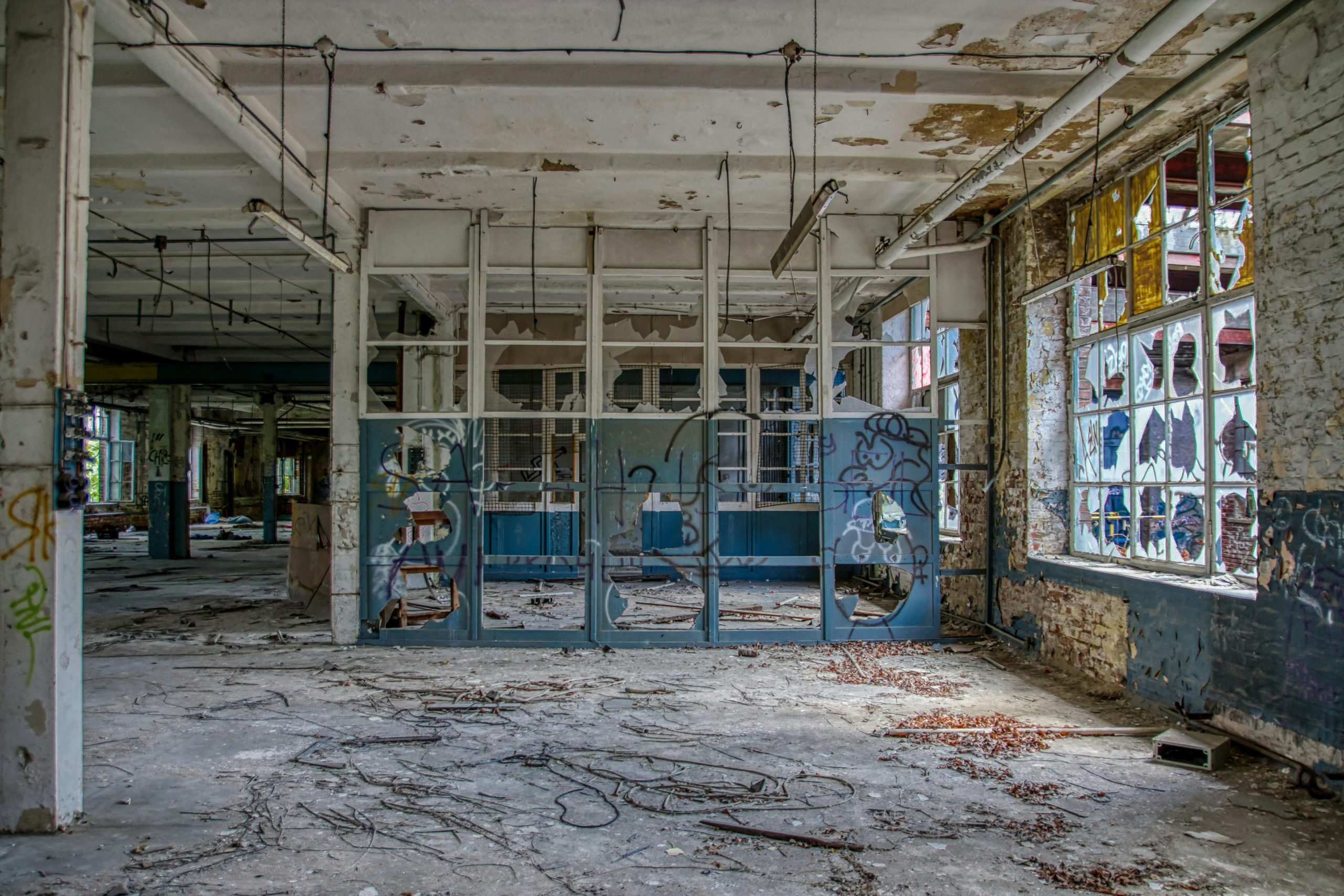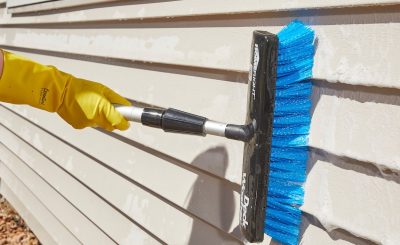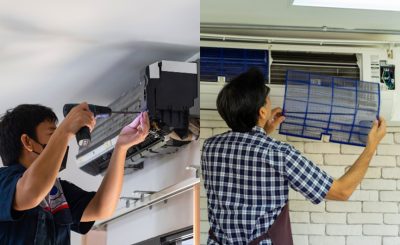What Is Asbestos?
Asbestos is a mineral that forms naturally. It’s known for being able to resist heat, which is why it was used in so many things. The thing is, asbestos is also really dangerous. You can find it in different forms, and it used to be everywhere before people realized how bad it was. It’s important to know what it looks like and where it might be hiding. If you want to learn more, there are resources that can help you understand asbestos dangers.
Health Risks Associated with Asbestos Exposure
Breathing in asbestos fibers can cause some serious health problems. We’re talking about diseases like mesothelioma, which is a type of cancer, and other lung issues. It’s not something to mess around with. The longer you’re exposed, the higher the risk. Here are some of the risks:
- Mesothelioma
- Lung cancer
- Asbestosis
- Pleural plaques
It’s really important to take precautions and avoid long-term exposure if you think you might be around asbestos.
Common Materials Containing Asbestos
Asbestos was used in a ton of different building materials before they figured out it was dangerous. Think old tiles, insulation, and even some types of cement. If your house was built before the 1980s, there’s a good chance some of these materials are lurking around. Here’s a quick list:
- Floor tiles
- Roofing shingles
- Insulation
- Cement pipes
Signs of Asbestos in Your Home
Identifying Potential Asbestos-Containing Materials
Okay, so you’re worried about asbestos. The first step is figuring out where it might be hiding. Asbestos was used in a ton of different building materials before people realized how dangerous it was. We’re talking about stuff like asbestos insulation, which can look like fluffy wool or even cardboard. It’s often gray or off-white, but not always.
- Insulation around pipes and boilers
- Floor tiles and adhesives
- Roofing shingles and siding
It’s not always easy to tell just by looking, but knowing the common places it was used is a good start. If you see something that looks suspicious, don’t touch it! That’s the golden rule.
Visual Inspection Techniques
Alright, time to play detective. But remember, this is just a visual check – don’t go poking around or disturbing anything. Look for materials that are damaged, crumbling, or showing signs of wear. Pay close attention to areas that were built or renovated before the 1980s, since that’s when asbestos use really started to decline. Check for cracked vinyl flooring or damaged insulation.
- Check for discoloration or staining on walls and ceilings.
- Look for loose or damaged tiles.
- Note any areas where materials are exposed or deteriorating.
If something looks off, make a note of it and take a picture. The more information you have, the better.
Age of Your Home and Asbestos Risk
The age of your house is a big clue when it comes to asbestos. If your home was built before the 1980s, there’s a higher chance that it contains asbestos-containing materials. Older homes were often built using materials that we now know are hazardous. That doesn’t mean every old house has asbestos, but it definitely increases the risk.
- Homes built before the 1940s have the highest risk.
- Homes built between the 1940s and 1980s still have a significant risk.
- Homes built after the 1980s are less likely to contain asbestos, but it’s still possible.
Even if your house is newer, it’s worth checking if any renovations were done using older materials. It’s always better to be safe than sorry.
Preparing for Asbestos Testing
Before anyone starts testing for asbestos, some prep work is needed. It’s not just grabbing a kit and hoping for the best. There are steps to take to make sure the testing is done right and, more importantly, safely. I remember when my neighbor tried to test without doing any prep – total disaster. He ended up spreading dust everywhere and had to call in a professional anyway. So, learn from his mistakes!
Gathering Necessary Tools and Equipment
First, get the right stuff. You can’t just use whatever’s lying around. Think of it like baking; you wouldn’t try to make a cake without the right ingredients, would you? For asbestos testing, you’ll need a few key items. A respirator mask is a must to avoid breathing in any potentially harmful fibers.
- A good quality respirator (rated N-95 or higher).
- Sealable plastic bags for samples.
- A spray bottle with water (for dampening the material before sampling).
- A utility knife or similar tool to cut a small sample.
Safety Precautions to Consider
Safety first, always! Asbestos is no joke, and you don’t want to mess around with it. Proper safety measures are important. Think of it like handling any hazardous material – you wouldn’t just go in without protection, right? Here are some things to keep in mind:
- Always wear a respirator mask.
- Wear disposable gloves and clothing.
- Wet the material before taking a sample to minimize dust.
- Avoid disturbing the material more than necessary.
- Seal samples immediately and label them clearly.
- Wash your hands thoroughly after collecting samples.
Choosing the Right Time for Testing
Timing matters. You wouldn’t test for asbestos during a hurricane, would you? Okay, maybe that’s an extreme example, but you get the point. Consider when it makes the most sense to test. For example, if you’re planning a renovation, test before you start tearing things apart. If you suspect asbestos is present, don’t wait until it’s disturbed. Also, think about the weather. Windy days can make it harder to control dust. The Public Buildings Service requirements are very clear on this.
- Test before any renovations or demolitions.
- Choose a calm day with minimal wind.
- If you suspect damage to asbestos-containing materials, test immediately.
- Consider testing if your home was built before the 1980s, when asbestos use was common.
DIY Asbestos Testing Methods
Collecting Samples Safely
When it comes to asbestos, safety is paramount. If a homeowner suspects asbestos in their home, they might consider collecting samples themselves for testing. However, it’s important to proceed with caution. The process of collecting samples can release asbestos fibers into the air, posing a health risk if done incorrectly.
Here’s a breakdown of how to collect samples safely:
- First, always wear appropriate personal protective equipment (PPE). This includes a respirator mask rated for asbestos, disposable gloves, and disposable coveralls. These items can be found at most hardware stores.
- Next, dampen the material you’re sampling with water containing a drop or two of dish soap. This helps to minimize the release of fibers into the air. Do not saturate the material, just lightly mist it.
- Carefully cut a small sample of the material using a sharp utility knife. Place the sample immediately into a sealed, airtight container, such as a zip-top bag. Double-bagging is recommended to prevent any leakage.
- Finally, thoroughly clean the area where you took the sample with a damp cloth and dispose of the cloth, gloves, and coveralls properly. Check local guidelines for asbestos disposal.
Using Asbestos Test Kits
For those who prefer a more structured approach, asbestos test kits are available for purchase. These kits typically contain all the necessary materials for collecting a sample and sending it to a laboratory for analysis. The advantage of using a kit is that it provides clear instructions and ensures that the sample is handled properly.
Here’s what you can expect when using an asbestos test kit:
- The kit will include instructions on how to collect a sample of the suspected asbestos-containing material. These instructions should be followed carefully to avoid contamination and ensure accurate results.
- The kit will also include a container for the sample and a form to fill out with information about the sample and your contact details. Be sure to fill out the form completely and accurately.
- Once you’ve collected the sample and filled out the form, you’ll need to send it to the laboratory specified in the kit. The cost of the laboratory analysis is usually included in the price of the kit, but it’s always a good idea to double-check.
Consider using a comprehensive kit for testing materials in your home.
Interpreting Test Results
After submitting a sample for laboratory analysis, the homeowner will receive a report detailing the findings. Understanding how to interpret these results is crucial for making informed decisions about asbestos management. The report will typically indicate whether asbestos was detected in the sample and, if so, the type and percentage of asbestos present.
Here’s what to look for in the test results:
- A positive result means that asbestos was detected in the sample. The report will specify the type of asbestos found (e.g., chrysotile, amosite, crocidolite) and the percentage of asbestos in the material. Any amount of asbestos is considered hazardous and requires professional remediation.
- A negative result means that no asbestos was detected in the sample. However, it’s important to note that a negative result doesn’t necessarily mean that the entire material is asbestos-free. Asbestos may be unevenly distributed throughout the material, so it’s possible that the sample was taken from an area that didn’t contain asbestos.
- The report may also include information about the laboratory’s testing methods and quality control procedures. This information can help you assess the reliability of the results. If you have any questions about the report, don’t hesitate to contact the laboratory for clarification. Consider using the PRO-LAB Asbestos Test Kit for detecting asbestos in your home.
Hiring Professional Asbestos Inspectors
What to Look for in a Professional
When dealing with something as serious as asbestos, you really want to make sure you’re hiring someone who knows what they’re doing. It’s not just about finding someone who can take a sample; it’s about finding someone who understands the risks, the regulations, and the proper procedures. Look for certifications from recognized organizations; that’s a good starting point. Also, check their experience. How long have they been doing this? What kind of projects have they worked on? Don’t be afraid to ask for references or look for online reviews. You want someone with a solid reputation. Finally, make sure they’re insured. If something goes wrong during the inspection, you want to be protected. You can hire local asbestos inspectors to help you out.
Understanding the Inspection Process
So, what actually happens during an asbestos inspection? Well, it’s more than just a quick walk-through. A good inspector will start by talking to you about the history of your home and any concerns you have. They’ll then do a thorough visual inspection, looking for potential asbestos-containing materials. This might include things like insulation, flooring, or ceiling tiles. If they suspect something contains asbestos, they’ll take samples for laboratory testing. The inspector should explain the entire process to you, including how the samples will be collected and where they’ll be sent for analysis. They should also be able to answer any questions you have about the risks of asbestos and the steps you can take to protect yourself.
Cost Considerations for Professional Testing
Let’s be real, asbestos testing isn’t free. The cost can vary depending on a few factors, like the size of your home, the number of samples that need to be taken, and the location of the lab. It’s a good idea to get quotes from a few different inspectors before making a decision. Here are some things that can affect the price:
- The number of samples taken.
- The lab fees for analysis.
- Travel costs for the inspector.
Don’t just go for the cheapest option, though. Remember, you’re paying for expertise and peace of mind. Make sure the inspector is qualified and experienced, even if it means paying a little more. It’s worth it to ensure the job is done right. Also, be sure to ask what’s included in the price. Does it cover the inspection, sample collection, lab analysis, and a written report? Get everything in writing so there are no surprises later on.
Laboratory Analysis of Asbestos Samples
How Samples Are Analyzed
Once you’ve got your asbestos sample, either yourself or through a professional, it heads to the lab. What happens there? Well, it’s not just a quick glance under a microscope. Labs use some pretty sophisticated techniques to figure out if asbestos is present and, if so, what type and how much. One common method is polarized light microscopy (PLM). This involves using special lighting and lenses to identify asbestos fibers based on their unique optical properties. Another technique is transmission electron microscopy (TEM), which is more powerful and can detect even the tiniest asbestos fibers. TEM is often used when PLM results are inconclusive or when very low levels of asbestos need to be detected. Sample preparationasbestos testing is also key; the lab technicians carefully prepare the sample to ensure accurate analysis.
Understanding Laboratory Reports
So, the lab does its thing, and then you get a report. What does it all mean? Lab reports can seem like a foreign language at first, but they usually include a few key pieces of information. First, they’ll state whether asbestos was detected or not. If it was, the report will specify the type of asbestos (e.g., chrysotile, amosite, crocidolite) and the concentration, often expressed as a percentage. The report should also include information about the sampling method used, the analytical technique, and the lab’s accreditation. Pay close attention to the detection limit, which is the lowest concentration of asbestos that the lab can reliably detect. If the report says “not detected” but the detection limit is high, it’s possible that low levels of asbestos are still present.
Timeframe for Results
How long does all this take? The timeframe for getting asbestos test results can vary depending on the lab and the type of analysis required. Generally, you can expect results within a few days to a couple of weeks. Factors that can affect the turnaround time include:
- The lab’s workload
- The complexity of the sample
- The analytical method used
- Whether any additional testing is needed
Some labs offer expedited services for an additional fee if you need results quickly. It’s always a good idea to ask the lab about their typical turnaround time when you submit your sample. Keep in mind that rushing the analysis might compromise the accuracy, so it’s a balance between speed and reliability. Also, remember to factor in shipping time if you’re mailing the sample to the lab. Once the lab receives the sample, the clock starts ticking. After the analysis, the lab will send you a detailed report, usually via email or mail. Make sure to review the report carefully and contact the lab if you have any questions.
Interpreting Asbestos Test Results
What Positive Results Mean
So, you’ve got your asbestos test results back, and they’re positive. What does that actually mean? Well, it means asbestos fibers were detected in the sample you sent in. The presence of asbestos, even in small amounts, indicates a potential health risk. It’s not time to panic, but it is time to take things seriously. Think about the location where the sample was taken. Is it somewhere that gets disturbed often, like an old pipe covering in the basement, or is it tucked away and undisturbed? The level of risk depends on the type of asbestos, its condition, and how easily fibers can become airborne. You’ll need to consider asbestos testing to determine the next steps.
Understanding Negative Results
Okay, so the test came back negative. Great news, right? It usually is, but it’s important to understand what a negative result doesn’t mean. It doesn’t necessarily mean your entire home is asbestos-free. It only means that the specific sample you submitted didn’t contain detectable levels of asbestos. If you only tested one area, and you have reason to suspect other materials might contain asbestos, you should consider testing those areas too. Also, the accuracy of the test depends on how well the sample was collected. If the sample wasn’t representative of the material in question, the results might not be accurate. It’s like only checking one page of a book and assuming you know the whole story. A negative result offers peace of mind for that specific sample, but further investigation might be needed.
Next Steps After Testing
So, you’ve got your results – now what? If the test was negative and you’re confident in the result, you might not need to do anything else. But if it was positive, or if you’re still unsure, here’s a basic plan:
- Consult with a professional: An asbestos inspector or abatement contractor can assess the situation and recommend the best course of action.
- Consider abatement or encapsulation: Depending on the location and condition of the asbestos-containing material, you might need to have it removed (abated) or sealed (encapsulated) to prevent fiber release.
- Follow local regulations: Many areas have specific rules about asbestos handling and removal. Make sure you’re following all applicable laws to avoid fines and protect your health and the health of others.
Remember, dealing with asbestos can be tricky, and it’s always best to err on the side of caution. Don’t try to remove asbestos yourself unless you’re properly trained and equipped. It’s just not worth the risk. Think of it like this: you wouldn’t try to perform surgery on yourself, would you? Leave asbestos removal to the pros.
Legal Requirements for Asbestos Testing
Local Regulations and Guidelines
Asbestos testing isn’t just a good idea; it’s often the law. The specific rules can change a lot depending on where you live. Cities, counties, and states all might have their own asbestos regulations. It’s important to check with your local environmental agency or building department to understand what’s required in your area. For example, some places mandate testing before any demolition or renovation work, especially in older buildings. Ignoring these rules can lead to hefty fines and project delays. It’s always better to be safe (and compliant) than sorry.
Disclosure Requirements for Homeowners
Selling a house? You might have to tell potential buyers about any asbestos you know about. Disclosure laws vary, but many states require sellers to reveal the presence of asbestos – or even just the suspicion of it – to prospective buyers. This is to protect the buyer’s health and safety. Not disclosing can lead to legal trouble down the road if asbestos is later found. It’s a good idea to get an asbestos inspection before putting your house on the market, just to be sure. This way, you can address any issues upfront and avoid surprises during the sale.
Implications for Renovation Projects
Planning a renovation? Asbestos could throw a wrench in your plans. Many jurisdictions require asbestos testing before you can start any work that might disturb asbestos-containing materials. This is especially true for older homes built before asbestos was phased out. If asbestos is found, you’ll likely need to have it professionally removed by licensed asbestos abatement contractors before you can proceed with your renovation. This can add to the cost and timeline of your project, but it’s essential for protecting the health of everyone involved. Ignoring this can lead to stop-work orders, fines, and potential health risks.
Safe Handling and Removal of Asbestos
Best Practices for Asbestos Removal
When it comes to asbestos, messing around isn’t an option. It’s not like a DIY project where you can just wing it. The best way to deal with asbestos is to not deal with it yourself. Seriously. If you even suspect you have asbestos, call in the pros. But if you’re in a situation where you need to handle it (maybe you’re a trained professional, or you’re dealing with a tiny, contained bit), there are some things to keep in mind.
- First, always wear the right protective gear. We’re talking respirators, not just a dust mask. Think full-body suits, gloves, and eye protection.
- Second, wet everything down. Asbestos is dangerous when it’s airborne, so keeping it wet helps prevent fibers from floating around.
- Third, seal off the area. You don’t want to contaminate the rest of your house. Use plastic sheeting and tape to create a barrier.
- Fourth, double-bag any asbestos-containing materials in special asbestos disposal bags.
- Fifth, label everything clearly. You want everyone to know what’s in those bags. Finally, dispose of the waste properly. Don’t just toss it in the trash. There are specific regulations for asbestos disposal, so check with your local authorities.
Hiring Licensed Asbestos Abatement Contractors
Okay, so you’ve decided to hire someone to take care of the asbestos. Good choice. But how do you find a good contractor? First, make sure they’re licensed. Licensing means they’ve had the proper training and know how to handle asbestos safely. Ask for proof of insurance. You want to make sure they’re covered if something goes wrong. Check their references. Talk to previous clients and see what their experience was like. Get multiple bids. Don’t just go with the first contractor you find. Compare prices and services. Make sure they have a detailed plan for the removal process. You want to know exactly what they’re going to do and how they’re going to do it. Trust your gut. If something feels off, move on to another contractor.
Post-Removal Safety Measures
So, the asbestos is gone. Great! But you’re not out of the woods yet. There are still some things you need to do to make sure everything is safe. First, have the area tested again. You want to make sure all the asbestos is gone. Second, clean everything thoroughly. Use a HEPA vacuum to remove any remaining fibers. Third, dispose of all the cleaning supplies properly. Don’t just toss them in the trash. Fourth, monitor the air quality. You want to make sure the air is safe to breathe. Finally, keep records of everything. You want to have documentation of the removal process in case you ever need it in the future. These steps are important to ensure the safety of your home and family.
Preventing Asbestos Exposure During Renovations
Renovations can stir up a lot of dust and debris, and if your home was built before the 1980s, there’s a chance some of that dust could contain asbestos. It’s really important to take precautions to avoid exposure during any remodeling work. You don’t want to accidentally release asbestos fibers into the air, which can lead to serious health problems down the road. So, let’s talk about how to keep things safe.
Planning Renovations with Asbestos in Mind
Before you even think about knocking down a wall or tearing up some old flooring, take a good look around. If you suspect asbestos might be present, get it checked out. Knowing what you’re dealing with beforehand is half the battle. Here’s what to consider:
- Inspect the areas you plan to renovate. Look for materials like old floor tiles, insulation, or textured ceilings. These are common spots for asbestos.
- Get a professional asbestos inspection if you’re unsure. It’s better to be safe than sorry.
- Develop a plan that minimizes disturbance to potential asbestos-containing materials. This might mean changing your renovation plans slightly.
Protective Measures for Homeowners
Even if you’re hiring contractors, it’s good to know what protective measures should be in place. This helps ensure everyone’s safety, including yours. Here are some things to keep in mind:
- Always wear appropriate personal protective equipment (PPE), including a respirator, gloves, and disposable coveralls. This will help prevent you from inhaling or coming into contact with asbestos fibers.
- Seal off the work area with plastic sheeting and duct tape to prevent asbestos fibers from spreading to other parts of the house. This creates a barrier that contains the contamination.
- Use a HEPA vacuum to clean up any dust or debris in the work area. Regular vacuums can actually spread asbestos fibers, so a HEPA vacuum is essential.
Emergency Procedures for Asbestos Exposure
Accidents happen, so it’s important to know what to do if you think you’ve been exposed to asbestos. Quick action can minimize the risks. Here’s what to do:
- Stop work immediately if you suspect you’ve disturbed asbestos-containing materials. Don’t continue until you’ve taken the necessary precautions.
- Evacuate the area and prevent others from entering. This will help prevent further exposure.
- If you think you’ve inhaled asbestos fibers, contact a doctor. They can provide guidance on monitoring your health and addressing any potential concerns.
Resources for Asbestos Testing and Removal
Government Agencies and Support
When dealing with asbestos, it’s good to know there are government bodies that can help. The Environmental Protection Agency (EPA) is a primary source for information. They have resources about asbestos exposure risks, regulations, and guidance on how to handle asbestos safely. State and local health departments also offer support, often providing specific guidelines relevant to your area. These agencies can be a great starting point for understanding the rules and finding qualified professionals.
Non-Profit Organizations
Non-profit organizations can also be a source of help. These groups often focus on raising awareness about the dangers of asbestos and supporting people affected by asbestos-related diseases. They might offer educational materials, connect you with support groups, or even provide legal assistance. Finding a local organization can provide personalized support and guidance.
Online Resources and Guides
There’s a ton of information online about asbestos testing and removal. Government websites, like the EPA, have detailed guides and fact sheets. You can also find articles and forums where people share their experiences and advice. Just be sure to check the source of the information to make sure it’s reliable. Look for information from reputable organizations or professionals in the field. It’s easy to get overwhelmed, so take your time and research asbestos carefully.







